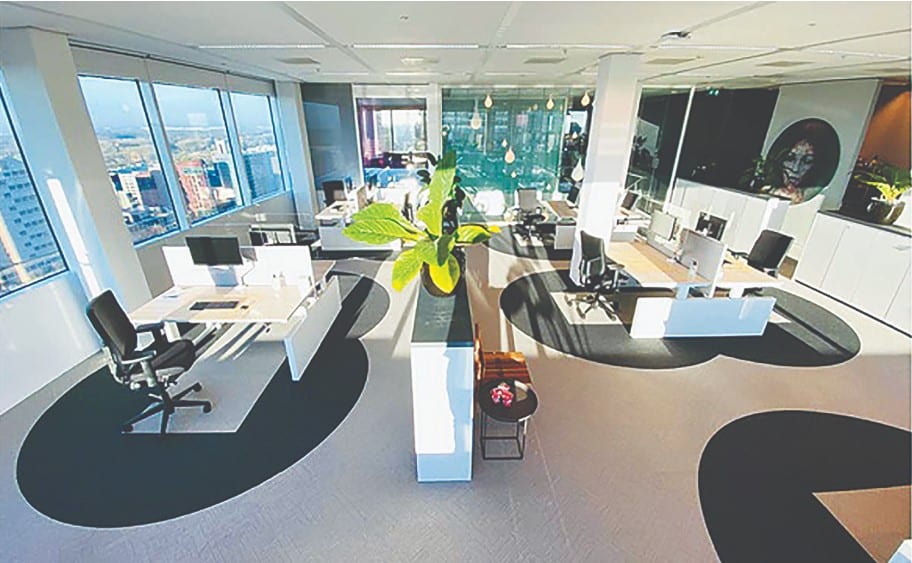
International real estate brokerage Cushman & Wakefield has developed a new concept called the “6 Feet Office” intended to help companies transition back to in-office work after the pandemic passes. Image courtesy of Cushman & Wakedfield
Architects and property managers are studying once-unthinkable changes to office environments as corporate America envisions a gradual return to work in the COVID-19 era.
Recent trends toward bench seating, unassigned desks and playful amenity spaces could be swept away by public health recommendations for an extended period of social distancing. Capacity of offices could be cut by 30 to 50 percent in the short term, as rolling work-from-home policies free up more space between redesigned workstations. Social spaces that companies once promoted as recruitment and retention tools could be among the first casualties in corporate space.
“As much as they wanted to have jungle gyms and pool rooms in the middle of the office and create this very amicable dorm-like adult playground, their staff doesn’t need to be there,” said Andrew Franz, a New York City architect who, like the bulk of his colleagues, now works from home.
The commercial real estate industry is just starting to come to grips with the implications of an extended period of social distancing, which could transform rituals governing a typical day at the office.
Staggered work schedules could become more common to reduce congestion in lobbies and elevators, said Edward Vis, head of project and development services for Cushman & Wakefield. In lieu of cubicles or bench seating, two-person workstations would be separated by panels or acrylic screens.
“We don’t think you’ll have the same density in the office as previously,” Vis said. “You could have 60 to 70 percent of the desks in the office [as before], but the rest will become obsolete.”
Vis is based in the brokerage’s Amsterdam office, which is spearheading a three-week-old project to fortify workspaces in preparation for the eventual lifting of government-imposed shutdowns of non-essential businesses.
Dubbed “The 6 Feet Office,” the initiative lays out six strategies for the new normal in offices. Arrows on floors point out clockwise traffic patterns, similar to those already being implemented in some retail stores, to avert face-to-face encounters and their risk of viral transmission. Markers on floors would delineate safe zones around workstations, warning colleagues to steer clear. Lis said costs per square foot of adopting the “6 Foot Office” recommendations will vary widely, depending upon the existing space.
Cushman & Wakefield’s Vis said his firm’s 4-story building in Amsterdam has already imposed one workaround in that area: people leaving the upper floors now take the stairs. “You have to separate the traffic flows,” he said.

